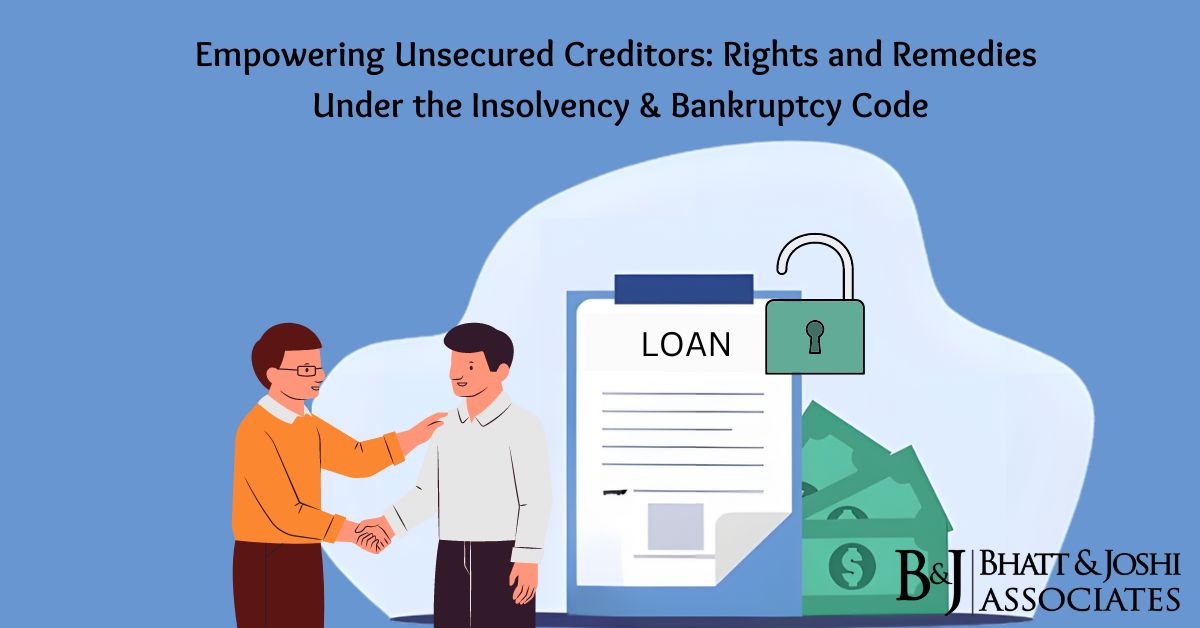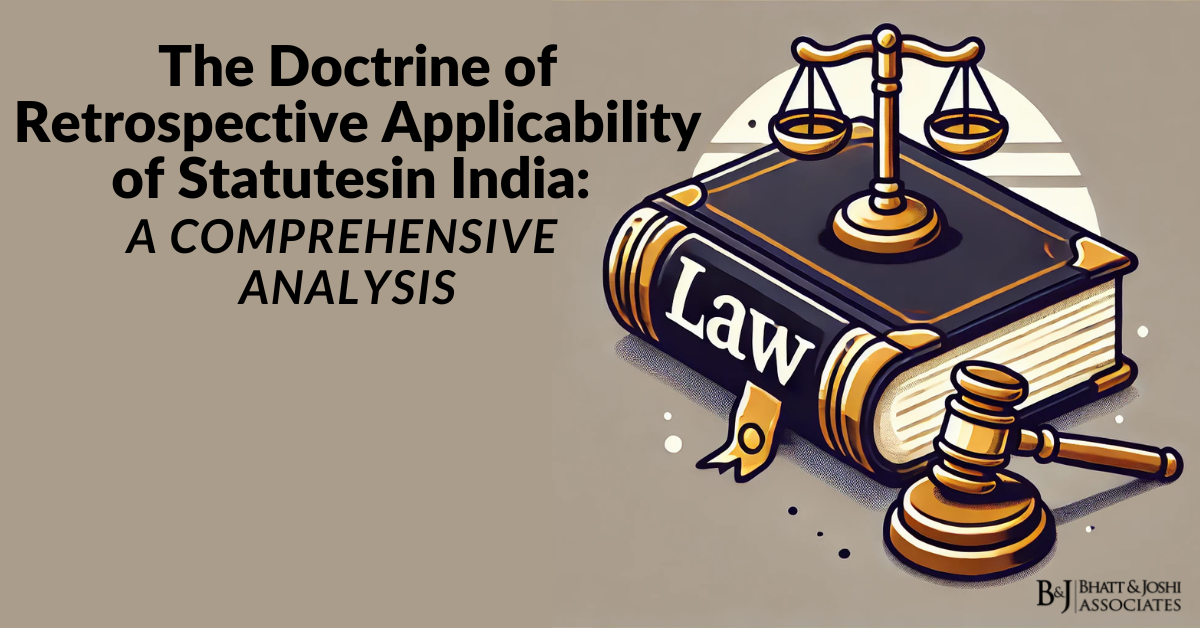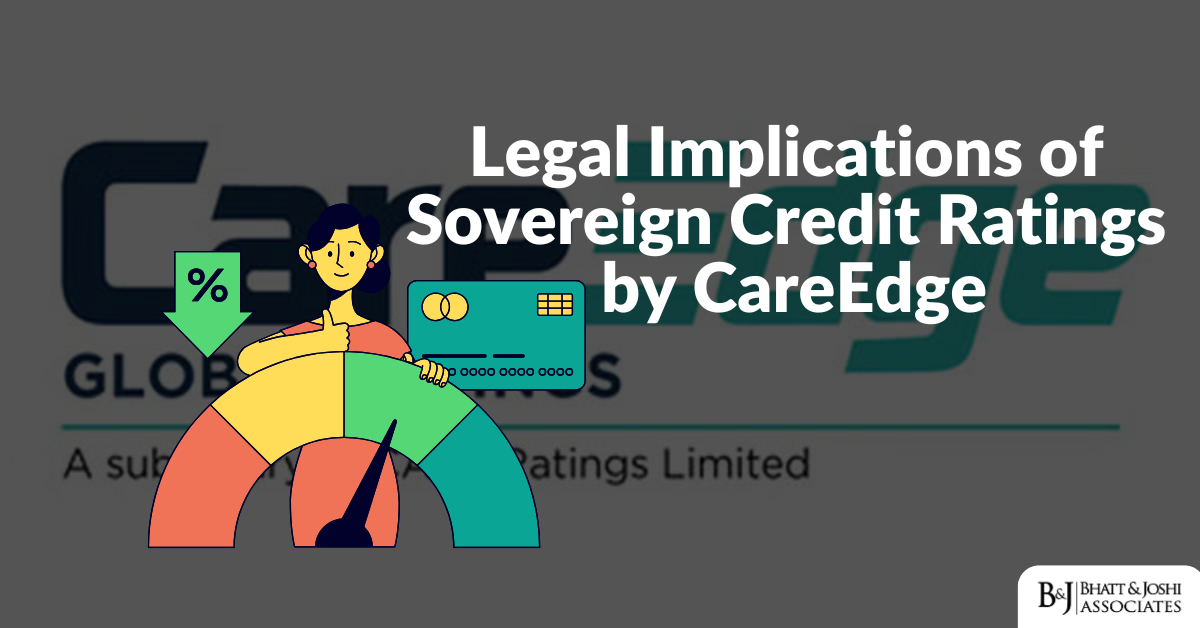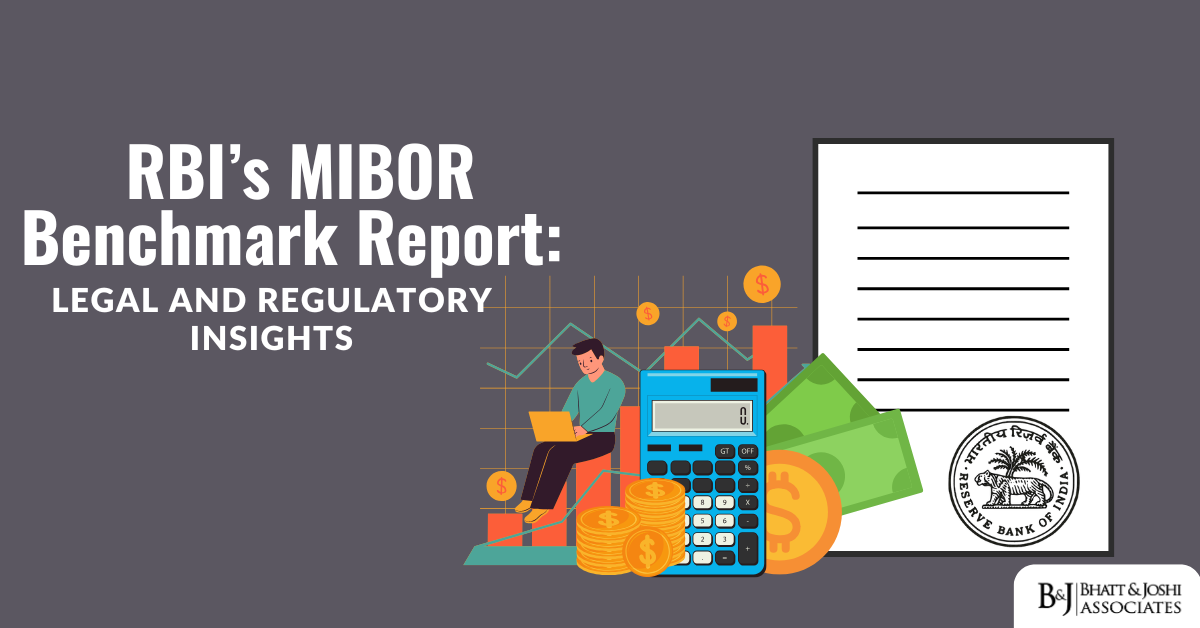Introduction
Within the complex realm of business transactions, unsecured creditors frequently encounter a dangerous predicament when a debtor declares insolvency. This predicament becomes even more evident when a large client, who owes a substantial amount of money, declares bankruptcy, causing tiny businesses to be in a condition of uncertainty. Unsecured creditors must have a clear understanding of their rights and the proactive choices they have under the Insolvency & Bankruptcy Code (IBC).
Exploring the Function of Unsecured Creditors
Unsecured creditors, referring to individuals or businesses who lack any collateral to reclaim their debts, play a crucial role in the financial ecosystem. Contrary to a widely held belief that smaller creditors are not adequately protected, Corporate Law guarantees identical rights and safeguards for all creditors without collateral. This protection applies regardless of the magnitude of the debt or the financial status of the debtor enterprise.
Understanding the Creditors’ Spectrum
Secured creditors possess a security interest in the debtor’s property, which entitles them to recover their debts. The purpose of establishing a security interest is to secure the borrower’s compliance, albeit without a guarantee.
Financial and operational creditors can be categorized based on the type of debts they are owing. Financial creditors refer to people who are owed financial debts, while operational creditors encompass individuals or entities who are owed money, such as workers and employees. Financial creditors can be classified as either secured or unsecured, whereas operational creditors are generally unsecured. This puts them at a greater risk in insolvency scenarios, presenting them with distinct issues.
Enhancing the Authority of Creditors through the Insolvency and Bankruptcy Code (IBC)
The Corporate Insolvency Resolution Process (CIRP) is initiated in accordance with Chapter II of Part II of the IBC. It can be initiated by financial creditors, operational creditors, or the corporate debtor that has defaulted. The procedure requires a minimum debt of Rs. 1 lakh, with financial creditors submitting their claims under Section 7 and operational creditors utilising either sections 8 or 9.
Debt recovery by operational creditors is a vital aspect of the overall debt recovery process. Prior to initiating any course of action, it is imperative for them to issue a demand notice to the corporate debtor. The recipient of the debt notice is given a period of ten days to reply, furnishing comprehensive details regarding the current status of the debt. Operational creditors that possess uncontested liabilities are the only ones eligible to initiate a Corporate Insolvency Resolution Process (CIRP).
The payment of liquidation proceeds is governed by the IBC, which sets up a definitive hierarchy for dispersing these funds. This encompasses the payment of charges related to the bankruptcy resolution process, expenses associated with liquidation, and the remuneration of employees. Prioritised ahead of all other claims are the payments owing to labourers for the past two years, followed by creditors with collateral, outstanding debts of creditors without collateral, and any remaining obligations.
Conclusion: Empowering Unsecured Creditors
The implementation of the Insolvency and Bankruptcy Code in 2016, together with later modifications, has brought about a substantial change in how business-related insolvencies and bankruptcies are dealt with. This comprehensive legislation simplifies the process of resolving disputes, replacing lengthy legal conflicts with a more effective technique that can be applied to individuals, partnerships, and corporate debtors. It is vital for unsecured creditors to comprehend their rights and utilise the available remedies under the IBC. Consulting a company lawyer is crucial when dealing with the intricacies of insolvency proceedings. The IBC 2016 guarantees that unsecured creditors are not left vulnerable, enabling them to actively engage in the settlement or liquidation process and protect their interests. Ultimately, the IBC 2016 serves as a prominent symbol of transformation, offering a strong structure for dealing with economic hardship in the corporate realm. Unsecured creditors, typically considered susceptible entities, can now confidently negotiate the insolvency terrain, equipped with an understanding of their entitlements and the options at their disposal to safeguard their financial interests.














